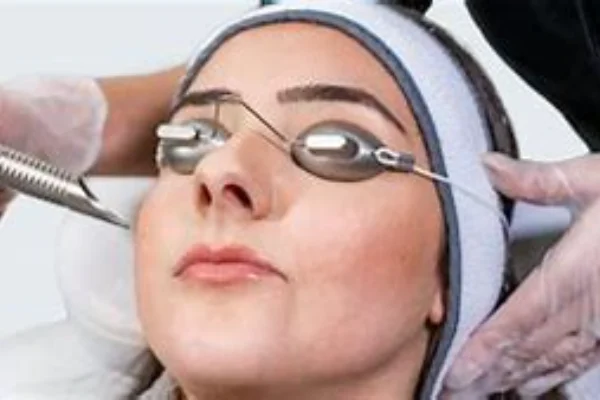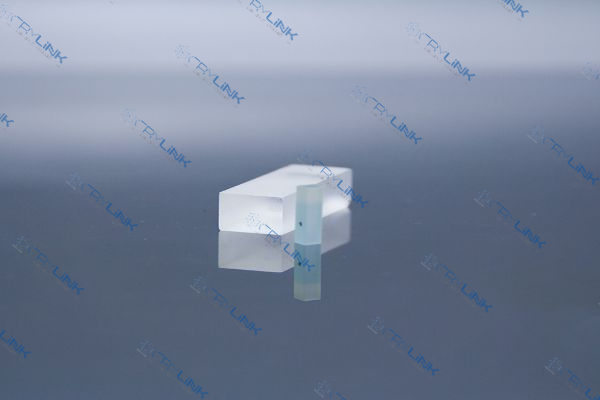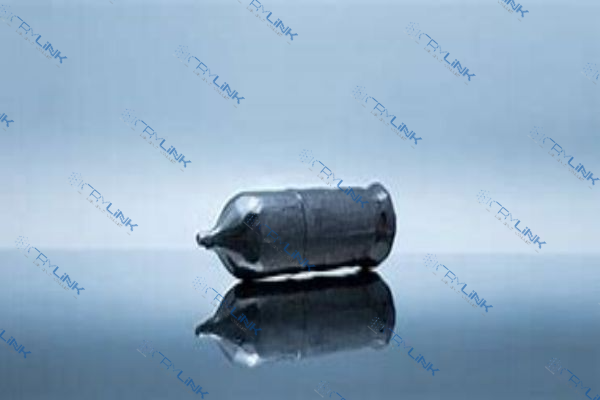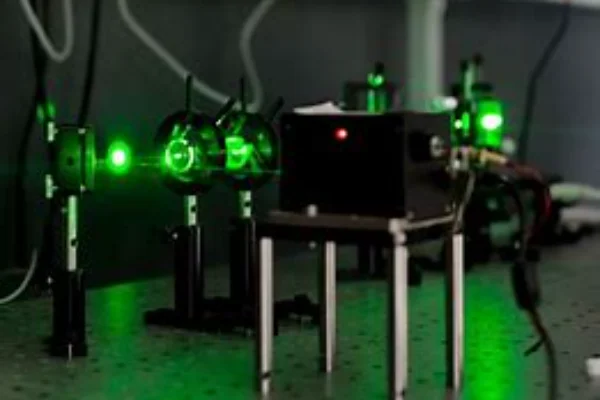Introduction
In the realm of laser technology, the selection of the right gain medium is paramount. It plays a crucial role in determining the overall performance of nanosecond (ns) laser systems. This article provides an in-depth analysis of various gain media, including Nd:YAG, Nd:YVO4, and Cr:YAG, and evaluates them based on their emission characteristics, optical properties, thermal conductivity, and nonlinear effects.
Understanding Gain Medium
A gain medium is a material that amplifies light by the process of stimulated emission. In nanosecond laser systems, the choice of gain medium can significantly influence the laser’s efficiency and functionality.
Types of Gain Media
Nd:YAG (Neodymium-doped Yttrium Aluminum Garnet)
Nd:YAG, or Neodymium-doped Yttrium Aluminum Garnet, is a cornerstone in the field of laser technology. Its popularity stems from its unique properties that make it an ideal gain medium for a variety of laser systems.
One of the most significant attributes of Nd:YAG is its high thermal conductivity. This property is crucial in the world of lasers, where heat generation is a common issue. The ability of Nd:YAG to efficiently dissipate heat ensures that the laser system remains stable and reliable even under high-power operations. This high thermal conductivity also reduces the risk of thermal damage to the system, extending the lifespan of the laser and reducing the need for frequent maintenance or replacement.

In addition to its thermal properties, Nd:YAG also boasts a broad emission bandwidth. This means that it can produce light over a wide range of wavelengths, making it incredibly versatile. This broad emission bandwidth allows Nd:YAG to be used in a variety of applications, from medical procedures such as laser eye surgery and dermatological treatments to industrial applications like cutting, welding, and engraving.
Furthermore, Nd:YAG’s robustness and resistance to environmental factors contribute to its popularity. It can withstand harsh operating conditions and maintain its performance over time, making it a cost-effective choice for long-term applications.
In conclusion, the high thermal conductivity and broad emission bandwidth of Nd:YAG, coupled with its durability and versatility, make it a popular and effective choice as a gain medium in laser systems. Its wide range of applications in both the medical and industrial sectors attests to its efficacy and adaptability, solidifying its position as a key player in the field of laser technology.

Nd:YVO4 (Neodymium-doped Yttrium Orthovanadate)
Nd:YVO4, or Neodymium-doped Yttrium Orthovanadate, is another essential gain medium in laser technology, particularly known for its high absorption and emission cross-sections. These characteristics make it an attractive choice for diode pumping, a method used to optically pump laser materials with semiconductor diodes.
The high absorption of Nd:YVO4 at the diode laser wavelengths means that it can efficiently absorb the light produced by the diode lasers. This efficiency translates into a more effective conversion of electrical energy into optical energy, leading to a more powerful and controlled laser output. This is particularly beneficial in applications where precision and control are paramount, such as in medical surgeries or delicate manufacturing processes.
In addition to its high absorption, Nd:YVO4 also has high emission cross-sections. This property means that the material can emit a large amount of light in response to optical pumping, further enhancing the efficiency of the laser system. The combination of high absorption and emission cross-sections allows Nd:YVO4 to produce intense laser beams with relatively low pumping power, making it an energy-efficient choice.
Another noteworthy aspect of Nd:YVO4 is its suitability for compact and portable laser systems. Its efficiency in converting pump light into laser light means that less cooling and thermal management are required, allowing for more streamlined and lightweight designs. This has led to its use in various portable devices, such as handheld laser pointers and compact medical instruments.
However, it’s worth noting that Nd:YVO4’s temperature sensitivity requires careful consideration in system design. Its performance can be affected by temperature changes, so adequate thermal management is essential to maintain optimal operation.
In summary, Nd:YVO4’s renowned high absorption and emission cross-sections make it suitable for diode pumping and a wide range of applications. Its efficiency and adaptability to compact designs have solidified its position as a valuable gain medium in the ever-evolving field of laser technology. Its unique properties continue to drive innovation and enable new possibilities in medical, industrial, and scientific applications.

Cr:YAG (Chromium-doped Yttrium Aluminum Garnet)
Cr:YAG, or Chromium-doped Yttrium Aluminum Garnet, is a specialized gain medium that has carved a niche for itself in the laser technology landscape. Its primary application is in passive Q-switching, a technique used to generate short and intense laser pulses. This ability to produce controlled pulses has made Cr:YAG an indispensable component in various laser systems.
Passive Q-switching with Cr:YAG is achieved through its unique saturable absorption properties. When used as a Q-switch, Cr:YAG initially absorbs the laser light, preventing it from building up within the laser cavity. As the intensity increases, the Cr:YAG becomes transparent, allowing the stored energy to be released in a sudden, intense pulse. This controlled release of energy is vital in applications that require precise timing and intensity, such as in medical treatments, material processing, and scientific research.
Cr:YAG’s excellence doesn’t stop at its Q-switching capabilities. It also offers outstanding thermal and mechanical properties. Its thermal stability ensures that it can handle the heat generated during the Q-switching process without degradation. This thermal resilience contributes to the overall reliability and longevity of the laser system, reducing the risk of failure and the need for maintenance.
The mechanical strength of Cr:YAG further adds to its appeal. It can withstand physical stresses and environmental conditions that might be encountered in industrial or outdoor applications. This robustness allows Cr:YAG to be used in a wide variety of settings, from controlled laboratory environments to harsh industrial sites.
Moreover, Cr:YAG’s broad transparency range makes it suitable for various wavelengths, enhancing its versatility. It can be used with different laser sources, allowing for flexibility in system design and adaptation to specific application requirements.
In conclusion, Cr:YAG’s use in passive Q-switching, combined with its excellent thermal and mechanical properties, makes it a valuable gain medium in laser technology. Its ability to generate controlled, intense pulses has opened doors to new possibilities in various fields, from medicine to manufacturing. Its robustness and adaptability continue to inspire innovations and contribute to advancements in laser applications, solidifying its reputation as a key player in the world of lasers.

Evaluating Performance Factors
Understanding the various factors that influence the performance of laser systems is essential in optimizing their output for specific applications. Emission characteristics, such as the wavelength and intensity of emitted light, play a crucial role in determining the suitability of different gain media for particular uses.
The optical properties, including absorption and emission spectra, are vital in assessing the laser’s efficiency, as they govern how the laser interacts with the gain medium and other components. Thermal conductivity is another significant factor, as it affects the laser’s stability and performance by controlling heat dissipation within the system. A gain medium with high thermal conductivity can efficiently manage heat, preventing potential damage and maintaining consistent performance.
Lastly, nonlinear effects, such as gain saturation and thermal lensing mitigation, are critical in shaping the laser beam and enhancing its quality. These effects can influence the beam’s intensity, shape, and coherence, and understanding how to control them is key to achieving the desired laser output. Together, these factors—emission characteristics, optical properties, thermal conductivity, and nonlinear effects—form a complex interplay that defines the behavior and capabilities of laser systems, guiding the selection of appropriate gain media and design considerations.

Advanced Considerations
Gain saturation, thermal lensing mitigation, and mode-locking capabilities are three critical aspects that must be considered in laser design and optimization. Gain saturation is a phenomenon that occurs when the amplification of light within the laser reaches a limit, restricting further increase in intensity. Understanding this effect is essential for laser design, as it helps in determining the maximum output power and avoiding potential issues related to over-amplification.
Thermal lensing, on the other hand, refers to the distortion of the laser beam due to temperature gradients within the gain medium. This can degrade the laser beam quality, making its mitigation crucial for maintaining performance. Techniques to counter thermal lensing often involve careful material selection and cooling strategies. Finally, mode-locking capabilities enable the generation of ultra-short pulses, a feature that has wide-ranging applications from medical imaging to material processing.
The ability to control pulse duration and timing offers insights into optimizing laser performance for specific applications, allowing for precise control and customization. Together, these factors—gain saturation, thermal lensing mitigation, and mode-locking capabilities—provide a comprehensive understanding of the complex dynamics within laser systems, guiding the development of efficient, high-quality lasers tailored to meet the demands of various applications.
Conclusion
Choosing the right gain medium for nanosecond laser systems is a complex task that requires a deep understanding of various performance factors. By evaluating and comparing gain media such as Nd:YAG, Nd:YVO4, and Cr:YAG, one can optimize laser performance for specific applications. The insights provided in this article serve as a comprehensive guide for researchers, engineers, and professionals in the field of laser technology.
FAQs
- What are the main types of gain media used in nanosecond laser systems?
Nd:YAG, Nd:YVO4, and Cr:YAG are the main types of gain media. - How does thermal conductivity affect laser performance?
Thermal conductivity influences heat dissipation, impacting the laser’s stability and performance. - What is gain saturation, and why is it important?
Gain saturation limits the amplification of light and is essential for laser design. - How can thermal lensing be mitigated in laser systems?
Proper design and material selection can help in mitigating thermal lensing. - What are the applications of mode-locking in lasers?
Mode-locking enables the generation of ultra-short pulses, used in various scientific and industrial applications.

Frank
Frank graduated from the University of Shanghai for Science and Technology, majoring in optics. As a technical engineer at Crylink Company, he deeply understands crystal materials and laser components.
Related Video(s) with this Article
Related Product(s) with this Article
Related Application(s) with this Article
